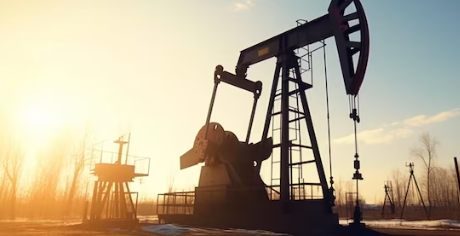$LNG $NEXT $XOM
#USLNG #NaturalGas #EnergyMarkets #LNGExports #EnvironmentalPolicy #EnergyTransition #FossilFuels #CleanEnergy #ClimateChange #GasMarkets #EnergySector #BidenAdministration
The U.S. liquefied natural gas (LNG) export industry, once touted as a dominant force in the global energy market, is now grappling with a slew of challenges threatening its long-term growth trajectory. Over the past decade, the U.S. has become one of the world’s top LNG exporters, benefitting from abundant shale gas supplies, advanced infrastructure, and greater destination flexibility. However, recent legal and operational hurdles are causing delays in new projects and casting doubts on future expansion. Environmental litigation seeking to halt construction, a major bankruptcy involving a key contractor, and the Biden administration’s more cautious permitting approach have all contributed to an environment of uncertainty. These developments could have significant ramifications for LNG players like Cheniere Energy ($LNG), NextDecade ($NEXT), and major stakeholders like ExxonMobil ($XOM), which have considerable exposure to this sector.
The fallout from these legal disputes and regulatory scrutiny is already reverberating across LNG spot markets, where U.S. shipments compete with suppliers in Qatar, Australia, and Russia. While U.S. LNG offers flexible contract terms appealing to European and Asian buyers concerned about energy security, the delays in building new facilities could erode that competitive advantage. The lack of infrastructure additions may limit export capacity, coinciding with a market likely constrained by growing global demand. For example, countries in Europe are seeking to reduce reliance on Russian gas amid geopolitical tensions, while emerging Asian economies are ramping up LNG imports as they transition from coal to cleaner-burning natural gas. A prolonged slowdown in U.S. LNG capacity growth could tighten global supply, pushing prices higher and potentially shifting market share to other producers.
Environmental challenges are another growing headwind. Activists are targeting LNG projects for their potential contributions to greenhouse gas emissions and their local environmental impact, such as habitat destruction and water usage. These lawsuits have already forced developers to navigate prolonged court battles, escalating costs, and tighter scrutiny from financiers. With President Joe Biden’s administration committed to advancing clean energy and cutting emissions, regulatory bottlenecks could persist well into the decade. The rising costs associated with delays, combined with pressure to meet evolving ESG (Environmental, Social, and Governance) criteria, could also deter investment in upcoming projects. This backdrop raises critical questions for investors weighing exposure to U.S. energy equities, as well as for policymakers seeking a balanced energy strategy.
Despite the hurdles, the long-term outlook for U.S. LNG remains cautiously optimistic given strong global demand fundamentals. As Europe continues diversifying its energy portfolio and Asian nations surge forward with ambitious decarbonization strategies that still involve natural gas, U.S. LNG players stand to benefit from their geographic and logistical advantages. A resolution to contractor and regulatory setbacks could reaccelerate project timelines, bolstering export capabilities. However, the next phase of U.S. LNG expansion will likely require stronger mitigation strategies for legal, political, and environmental risks. Investors in stocks like $LNG and $NEXT are advised to closely monitor these developments as global gas markets react to shifting supply and demand dynamics. Amid this uncertainty, the U.S. energy sector faces what could be a decisive decade.







Comments are closed.